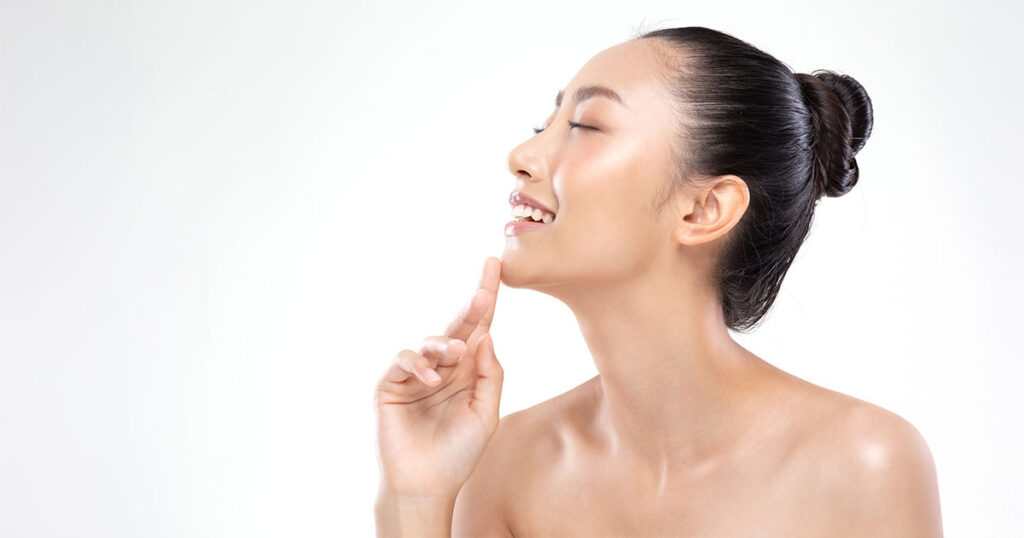Home / Surgical Procedures / Face Procedures / Chin Lipo / Chin Lipo Swelling

It is a universal truth that surgery, including chin liposuction, causes swelling. Inflammation happens when your body sends extra nutrients and infection-fighting cells to the surgical site to promote healing. While this influx of TLC is important for the healing process, it can cause tightness and swelling in the first few weeks after your procedure.
The swelling will ease over time, but exactly how much you swell and how long it takes to return to normal depends on factors such as your age, skin elasticity, the amount of fat removed, and your adherence to your post-op care instructions.
Healing is a lot like a road trip. You know where you're going, but you might not know exactly how to get there or what interesting landmarks you might pass along the way. This timeline can serve as your swelling roadmap, letting you know what healing milestones you will pass on your journey and when to expect them.
Swelling is a normal part of the healing process, but it can be uncomfortable and need not go unchecked. There are steps you can and should take to reduce swelling to make yourself feel more comfortable while minimizing the severity and duration of your inflammation.
After your chin liposuction, your plastic surgeon will provide you with a chin strap along with instructions to wear it 24/7. Please follow those instructions. Yes, we know how silly it looks (and feels), but this strap will help to minimize fluid buildup under the chin caused by gravity. It also helps your chin hold its new shape and contour while you heal. Skipping or loosening the strap too soon can lead to prolonged puffiness or uneven healing.
Swelling under the jaw is expected after chin lipo and tends to get worse at night. To prevent this, use spare pillows or a wedge pillow to prop yourself up at a 30- to 45-degree angle when sleeping. You can also sleep in a recliner if that feels more comfortable.
For the first two weeks after your surgery, it’s best to avoid keeping your head down for long periods of time. People tend to adopt this posture when looking at their phone or working in a hunched position. This puts pressure on the healing area, potentially making swelling worse and straining the natural lymphatic drainage process.
While we understand that you can’t sit perfectly still like a statue after your chin lipo, we do recommend that you move your lower face as little as possible during the first week following surgery. Try and avoid chewing tough foods, yawning excessively, or talking and laughing a lot. Overuse of the lower face and neck muscles can aggravate post-op inflammation under the chin.
Lymphatic massage employs special techniques that help keep lymph flowing through the body. Doing so beneath your chin and around your neck can help reduce swelling from pooled lymphatic fluid after chin lipo. Your surgeon can show you the proper techniques to ensure that you're doing the massage correctly to help rather than hinder healing.
Some swelling after a chin liposuction procedure is normal and expected, but there are some specific warning signs that may indicate problematic rather than normal inflammation. These include:
If you have these issues or other concerns, reach out to your surgeon for help. They can check for signs of complications and adjust your care as needed.
The swelling after chin lipo is slightly different for everyone but typically follows a predictable timeline. Most visible puffiness is gone four to six weeks after surgery and your final chin shape emerges in three to six months. Following your surgeon’s post-op care instructions plays a major role in reducing swelling and achieving a sharp, defined jawline.
Remember to have patience with your body as you heal—recovery is a process and takes time. Your swelling will ease, and you will be enjoying your new chin contour soon.
Yes, it’s common to notice more puffiness in the morning, especially if you slept without head elevation.
